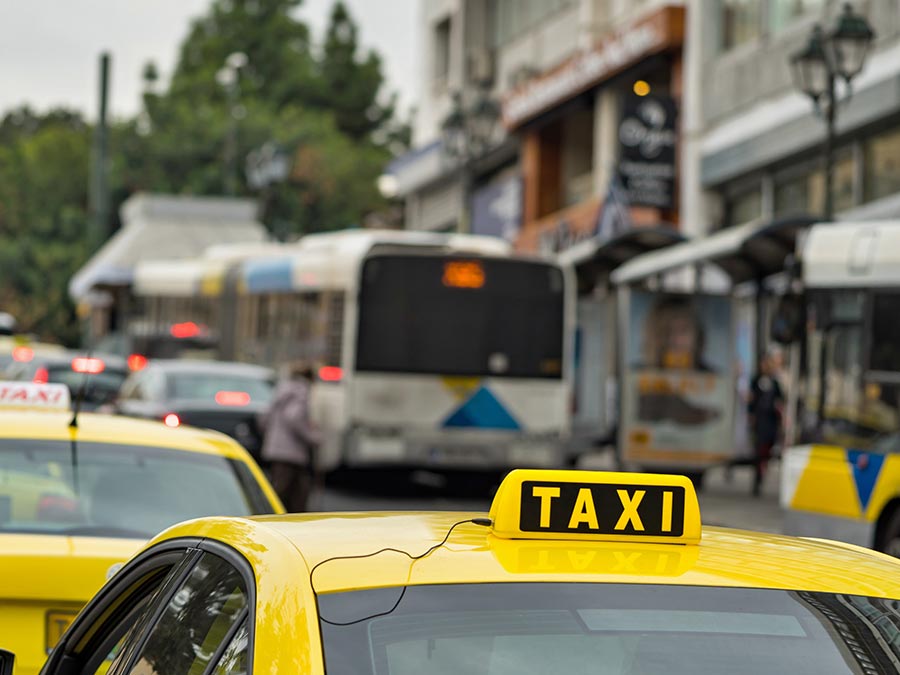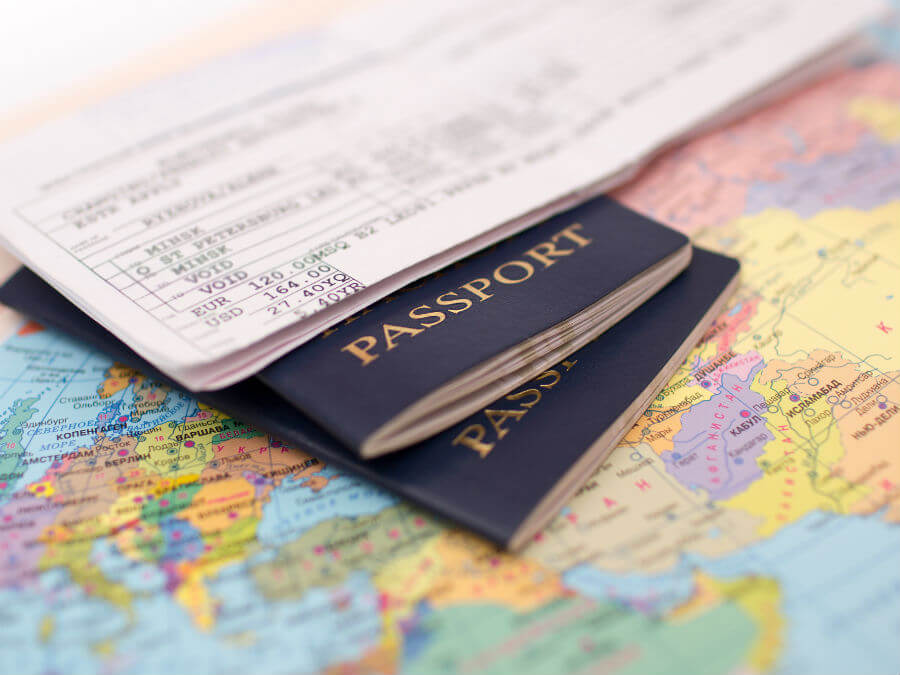
Inflight and travel booking scams
When we think of pickpockets and scammers overseas, we often think of train stations, tourist attractions and bustling city streets as high-risk areas to watch out for. However, unlucky travellers are falling victim to scammers before they reach their destinations, through travel bookings, in airports and even on the plane.
Inflight theft is expensive and upsetting. Thieves have recognised that travel-weary passengers are easy targets while flying and that mid-flight naps and toilet breaks are the perfect opportunities to strike. Above all, they see that just about every passenger is flying with cash or some sort of electronic device, whether it be an expensive laptop, camera or phone in their carry-on bag.
And in an age where most of our travel preparation is done online, booking scams are also ones to watch. From phony airline deals, sham visa applications and even Covid-19 travel scams, travellers have to keep their guard up at all stages of their journey.
So how can you avoid falling victim to inflight theft and travel booking scams? We look into situations to avoid theft, simple strategies to protect your valuables, and technology that can help you win the fight against thieves.
How common is inflight theft?
It’s easy to assume that your valuables are safe from thieves once your plane has taken off. After all, would a pickpocket really risk being caught in the act with nowhere to escape?
The surprising reality is that inflight theft is more common than you’d expect. And unfortunately, victims often only discover their missing valuables after jumping in a taxi to leave the airport. But even when they notice something missing while up in the air, there isn’t always an easy solution.
Matt Graham from the Australian Frequent Flyer tells of several incidents of inflight theft, including a 2019 Malaysia airlines flight where a pickpocketer was escorted off the plane, and another where a traveller discovered that the passenger next to them was stealing from their carry-on bag. Thankfully, security staff were waiting for the thief at the arrival gate.
Inflight theft happens on planes all around the world. It’s up to passengers to protect themselves and their valuables, but where can you start?
Five ways your carry-on luggage is at risk
Imagine boarding your final flight home after an around-the-world adventure. You’re tired, road-worn and ready to sink into your plane seat and doze off while watching a few movies. Thieving passengers are the last thing on your mind.
It’s easy to see how travellers can let their guard down while flying, whether they’re exhausted, distracted or nervous. However, there are a few inflight risks that passengers should keep at the front of mind to keep their valuables safe.
1. Leaving overhead bags unlocked
We often forget that overhead compartments are shared spaces, so fellow passengers have easy access to your bag throughout the duration of the flight. As such, it’s important that your bag remains locked at all times.
If you’ve forgotten your luggage locks, stow your bag in the overhead compartment upside down with the bag openings facing away from the overhead locker door. It’s a simple but effective way to deter thieves, who would have to pull your bag out of the compartment to access the zips.
Alternatively, consider storing your carry-on bag in the overhead compartment on the opposite side of the aisle to where you’re sitting, instead of directly above your head where it’s more difficult to see. This way, you can keep an eye on your bag when other passengers stand to sort through their belongings.
2. Sleeping
A lot of travellers pride themselves on their ability to sleep on the plane. While this ability can come in handy on those long-haul flights, sleeping passengers are prime targets for opportunistic thieves.
It’s unreasonable to say that you should never fall asleep while flying, but if you do, ensure your valuables are locked securely in your carry-on bag and any smaller electronics are also accounted for. Alternatively, consider keeping your travel documents and cash on your person at all times with a travel wallet worn around your neck, beneath your shirt.
3. Visiting the bathroom
How many times have you left an expensive item on your plane seat while visiting the bathroom? Locking your valuables in a carry-on bag in the overhead compartment every time you leave your seat is inconvenient, so it’s easy to see why toilet breaks are another prime opportunity for thieves.
However, leaving valuables unattended is never recommended, so take smaller items like phones with you to the bathroom whenever possible.
If you have a larger item like a laptop computer, ask the passenger next to you to keep an eye on it for you. Even if they are the would-be thief, they may think twice knowing that you have your belongings at front of mind.
4. Stowing bags under the seat
What better invitation for theft than placing your carry-on at the toes of a pickpocket? Stowing your bag under the seat is an easy way to tempt opportunists, especially when compartments aren’t secured with luggage locks.
Anti-theft bags made from slash-proof durable material are great lightweight carry-on options, and when accompanied with luggage locks, they pose a challenge to pickpockets.
5. Disembarking the plane
The plane has taxied to a stop and everyone is eager to stretch their legs and get on with their journey - disembarking can be a frantic time. With bodies and bags crammed into the aisle, it also presents an opportunity for thieves to strike while passengers are distracted.
Keep your carry-on bag at your front while shuffling down the aisle and ensure you haven’t left anything on your seat. An aircraft cleaner in a United States airport has revealed the staggering volume of valuable electronics that passengers leave behind, not all of which are reported to lost and found.
How to avoid airport thefts
Unfortunately, getting your bags off the plane in one piece is only half the battle. Airports themselves are a hotbed for scammers and pickpockets, who take advantage of tired and distracted travellers. Brazen thieves have even been known to hover around the luggage carousel, and then calmly wheel a bag out of the airport.
Clearly marking your bag with an easily-identifiable tag or ribbon isn’t just an easy way to spot your bag early. It also helps you to notice when that bag being wheeled out of the airport isn’t just another black suitcase - it’s yours.
- Other airport scams to watch out for include:
- People stalling at security checkpoints while their accomplice accesses your bag on the other side.
- Fake baggage helpers who offer to carry your heavy luggage to the taxi stand.
- Being deliberately short-changed by currency converters.
Carry-on packing tips
How you pack your carry-on bag can also affect your chances of falling victim to an inflight pickpocket or airport scammer. Consider using these carry-on packing tips:
- Place your more valuable items at the bottom of your bag’s main compartment and never within smaller exterior pockets.
- Use luggage locks to secure your pockets.
- Packing cubes aren’t just great for keeping things organised - they can also pose another layer of defence to thieves. Just be sure to attach your cubes to the interior of the bag so the entire compartment can’t be taken.
- Avoid leaving any compartments even slightly open, whether they’re being used or not. This is an open invitation to thieves.
Pre-flight scams
While some adventurers still prefer to visit a travel agency to organise their holiday, most modern travellers will research, book and prepare for their journey completely online. From flight bookings, visa applications, Covid-19 entry forms and airport check-in, most of the travelling nitty-gritty can be done at the click of a button, even just from your phone.
These conveniences have made travelling easier than ever before, but it’s also presented some new risks. Let’s look into a few scams travellers should be wary of before they reach the airport.
Flight booking scams
There are around 5,000 airlines operating around the world and countless travel aggregator websites like Skyscanner, which means travellers are spoilt for choice when searching for the best fares. When booking flights, it’s likely that you’ll encounter brand names you’ve never heard of, whether it be a small foreign airline or travel deal website claiming to have access to the best rates.
Unfortunately, some more sophisticated scammers have created fake flight comparison websites to trick people out of thousands. The traveller finds an enticing fare price while searching their route online, visits a seemingly legitimate website, purchases the tickets and receives a confirmation email. However, the tickets often never arrive, and if they do, they can be fabrications.
The lesson here is an old one: if it seems too good to be true, it probably is. Research any booking websites before committing to buy anything - a quick Google search with the website name and “scam” will likely uncover the truth.
Flight check-in scams
Airlines will often email and text message their passengers alerting them they can now check into their flight. Scammers have been known to seize this opportunity by crafting fake messages on behalf of the airline, directing passengers to a payment page for fake in-flight purchases, travel upgrades or other payments.
This kind of phishing scam can also be difficult to spot, especially when scammers replicate the design and branding of the airline in their messages. Red flags to watch out for include:
- Spelling and grammar errors.
- Suspicious email addresses, such as one that changes a single letter of the airline (E.g. “Quantas” instead of “Qantas”).
- Hyperlinks that direct to poorly designed or visually different website pages.
- Receiving multiple check-in emails from different addresses or phone numbers.
- If in doubt, leave your flight check-in to the physical desk at the airport.
Pre-flight Covid-19 document scams
The Covid-19 pandemic has meant that travellers need to add a few extra items to their pre-flight travel checklist. Many destinations require visitors to submit either online declarations, negative Covid-19 test results or both.
Recently, scammers have been found to exploit this fact by creating fake Covid-19 declarations to collect personal information such as your travel plans and flight numbers, and even demand payment. In fact, the Czech Republic’s online COVID travel portal warns: “Filling in the arrival form is free of charge. If the form asks you to pay, do not pay under any circumstances, it is a scam.”
Research your Covid-19 requirements on the official government website of your destination and on Smart Traveller. Entry requirements differ between countries and are often changing, so take your time with your research and ask your airline if in doubt.
Covid-19 travel test scams
Similarly, the testing requirements of countries also differ, with some destinations requiring different types of tests than others.
Be wary of websites selling at-home tests that claim to grant you entry to countries all around the world, or rapid tests that aren’t accepted by your destination. Some destinations will only accept a PCR test, and others will only accept a rapid test result if it was administered by an approved practice.
The content of this article is general and provided for information purposes only. Southern Cross Travel Insurance (SCTI) doesn’t guarantee or warrant the accuracy, completeness or currency of any article.
This article may contain hyperlinks to other websites owned or operated by third parties, or references to third party products or services. SCTI isn’t responsible for, and makes no recommendation about, the content or accuracy of any third party website, or for the suitability or performance of any product or service. The inclusion of a link in this article doesn’t imply that SCTI endorses the website or third party product/service.





